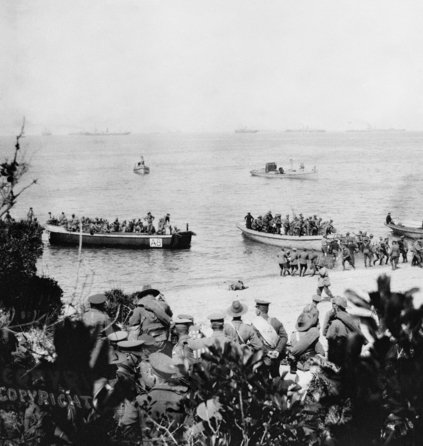FEatures of ANZAC Day
Catafalque
A catafalque is a raised structure supporting a stand upon which a coffin is placed for display before burial; people may then file past and pay their last respects to the deceased person. In times gone by a watch, or a vigil, was mounted around the coffin to ensure that the body was not interfered with whilst it lay in State and around memorials on occasions of remembrance (it could be said that a memorial is a ‘symbolic coffin’ for those who have fallen).
Resting on Arms Reversed
The origin of the tradition of military members resting on arms reversed around a catafalque or memorial is lost in time. It was used by a Commonwealth soldier at the execution of Charles 1 in 1649 (the soldier was, however, duly punished for his symbolic gesture toward the King) and it is recorded that at the funeral for Marlborough, in 1722, the troops carried out a formal reverse arms drill. This drill was especially invented for Marlborough’s funeral as a unique sign of respect and is still used for military funerals and commemorative services today.
Rosemary
Rosemary is an ancient symbol of remembrance. Since ancient times, this aromatic herb has been believed to have properties to improve the memory. Even today, rosemary oils and extracts are sold for this purpose. Possibly because of these properties, rosemary became an emblem of both fidelity and remembrance in ancient literature and folklore. Traditionally, sprigs of rosemary are worn on Anzac Day and sometimes Remembrance Day and are usually handed out by Legacy and the RSL. Rosemary has particular significance for Australians as it is found growing wild on the Gallipoli peninsula
Poppies or Rosemary for ANZAC Day?
Both poppies and rosemary are symbols of remembrance and it's common to see both worn on Anzac Day, however rosemary is the traditional symbol of remembrance to wear on Anzac Day in Australia.
This is because rosemary grows wild on the Gallipoli peninsula, so it has special significance to Anzac Day.
It's also because the Australian Returned Soldiers and Sailors Imperial League (the forerunner to the RSL) passed a resolution to recognise the poppy as the international memorial flower to be worn on 11 November and so the poppy is formally associated with Remembrance Day.
Rouse and Reveille
Since Roman times, bugles or horns had been used as signals to command soldiers on the battlefield and regulate soldiers' days in barracks. "Reveille" was a bright cheerful call to rouse soldiers from their slumber, ready for duty. It symbolises an awakening in a better world for the dead and rouses the living, their respects paid to the memory of their comrades, back to duty. "Rouse" is a shorter bugle call which, as its name suggests, was also used to call soldiers to their duties. It is "Rouse", due to its much shorter length, which is most commonly used in conjunction with the "Last Post" at remembrance services and funerals. The exception is the Dawn Service when "Reveille" is played.
The Ode of Remembrance
The Ode of Remembrance is part of the poem “For the Fallen” written by English poet Laurence Binyon during WW1. Since 1921, the fourth stanza – known as The Ode – has become a central part of Anzac Day ceremonies, encapsulating Australia’s collective sense of respect and loss for the service people who gave their lives during World War I, and in all conflicts since.
They shall grow not old, as we that are left grow old;
Age shall not weary them, nor the years condemn.
At the going down of the sun and in the morning
We will remember them.
The Ode is read by the designated person. All in attendance stand and repeat “We will remember them. Lest we forget”



